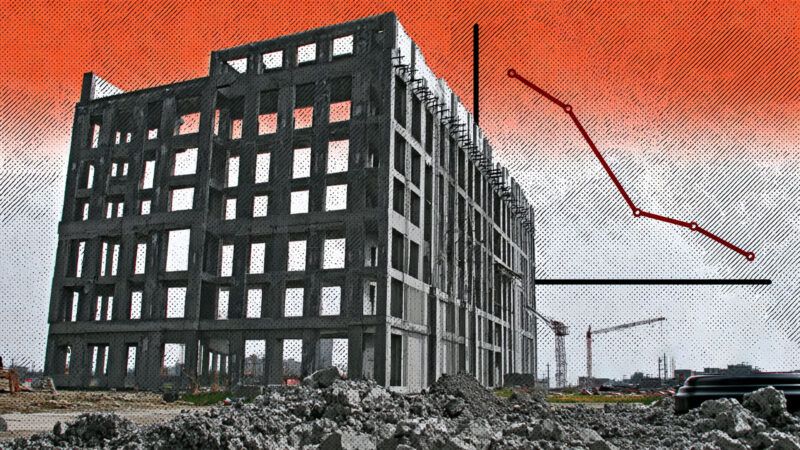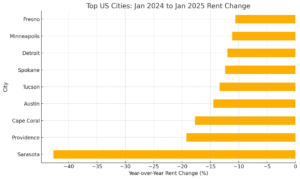Rent Prices Are Falling Fast in America's Most Pro-Housing Cities
From January 2024 to January 2025, average rent in Sarasota fell from $3,290 to $1,886 per month.

Rental prices in some of the country's largest cities are falling—some by almost 45 percent, according to new data from Five Star Cash Offer, a real estate investment firm that operates as a direct cash homebuyer. The dataset, which includes the top 65 metropolitan areas in the United States, reveals that cities that have recently enacted pro-housing policies have experienced the most significant year-over-year decline in rental prices nationwide.

The data from Five Star Cash Offer supports recent reports from online real estate brokerages Redfin and Realtor, which detail a decline in rent prices across some of the largest metropolitan areas in the United States. Sarasota, Florida, is the city with the highest annual decline, with a 42.67 percent drop (from $3,290 to $1,886) in average rent from January 2024 to January 2025. In recent years, the City Commission has adopted a series of pro-housing policies aimed at addressing the city's housing crisis, such as the easing of restrictions on mixed-use and higher-density developments in 2022. In 2024, the commission passed several additional measures to relax density restrictions and allocated $40 million for affordable housing projects.
Providence, Rhode Island, the city with the second-highest year-over-year decline, saw a 19.22 percent drop in monthly rent, from $2,513 to $2,030. Some of this decline may be attributed to policies aimed at deregulating the housing industry. In 2023, the state passed a package of housing legislation to "address the long-lagging housing production rates" in the state by streamlining permitting for land use and land development and easing restrictions around repurposing existing structures for housing. In 2024, the city of Providence streamlined its construction application process.
The completion of multifamily housing units is also driving rent decreases in Austin, Texas, and Cape Coral, Florida. Across the U.S., multifamily housing construction has slowed from its pre-COVID levels, partly due to regulatory hurdles, high costs, and concerns about affordability. Yet cities with the steepest rent declines, such as Austin and Cape Coral, are notably issuing building permits at or above their pre-pandemic rates. Austin, fourth in rental price drops, issued the most multifamily permits nationally (64.5 per 10,000 people). Cape Coral, third on the list, almost doubled its pre-pandemic rate with 59.6 permits per 10,000 people.
Minneapolis, which experienced an 11.14 percent annual decrease in rent, saw a 12 percent increase in housing supply between 2017 and 2022, partly fueled by its 2019 zoning reforms. In the first five years after these reforms passed, Minneapolis rents decreased by 4 percent, and Hennepin County, home to Minneapolis, has become the second-easiest county to purchase a house in compared to the seven counties adjacent to it, despite being the most populous county in the state. Minneapolis was also the first major U.S. city to end single-family-only zoning, allowing developers to mix up the types of projects they build across different neighborhoods.
While these rent decreases may be a result of a more deregulated housing industry, other factors could be at play. Florida has been struck in recent years by Hurricanes Ian and Milton, and higher flood insurance premiums could be forcing some homeowners—especially those with second homes—to sell, creating a surplus of available housing. (In March, Sarasota reached an eight-year high for its housing inventory.) Still, Cape Coral and Sarasota are both expecting to see their populations increase in the coming years.
The data are clear: Pro-housing policies lead to more affordable housing. Cities seeking to reduce the cost of living would be best served by adopting policies that facilitate the construction of new homes and residential buildings.


Show Comments (21)